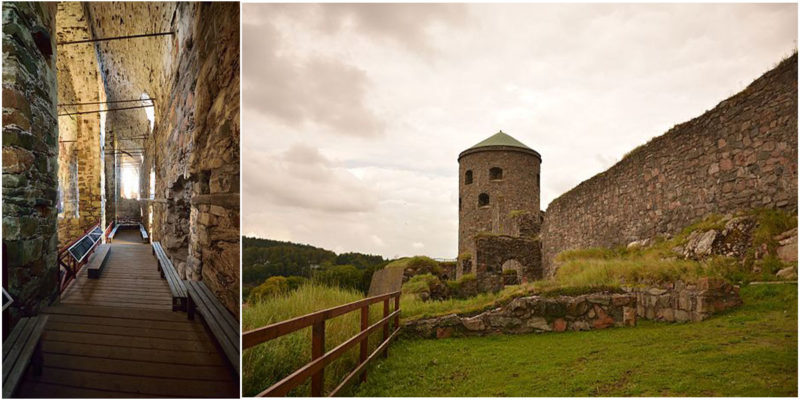Bohus Fortress, also known as Båhus, it is a building which was constructed on the old border between Sweden and Norway in Kungälv, Bohuslän, Sweden.
In 1308, under the rule of Norwegian King Haakon V Magnuson (reigned 1299 to 1319), the construction of Bohus Fortress began. The castle stands on a 130-foot high cliff above the surrounding area, and the river forms a natural moat around it.



Bohuslän (Båhuslen) was a territory important to Norway’s border defense against Sweden. All existing records of the building from the Medieval period attribute credit for its design to the architect Guthorm Kavli. It is believed that under the guidance of Count Jacob of Halland in 1390, Bohus Fortress was constructed out of brick and granite, which were typical building materials for that period.



140 years later a surrounding wall was built which measured 27.8ft (but up to 44.2ft in some parts) in height, and 9.8ft thick at the base. The castle was designed with four rectangular corner towers, a brick tower on the eastern side, and a gate and drawbridge on the western side. Inside the walls, there was a chapel, the castle commander’s residence, the guardroom, and the kitchen. The fortress held such a secure position that in its time, Båhus was Norway’s strongest defence fortress.




During the Northern War war (1563–1570), the castle was attacked 14 times, and although it was damaged, it was never captured. In 1566, 250 Swedish soldiers stormed the northeasternmost tower, but the commander of the Bohus Fortress responded to the attack by sending a volunteer to blow up the ammunition stored underneath the tower.
In exchange for this act, the family of the volunteer was rewarded with a piece of land that remains in possession of his descendants. The tower was immediately rebuilt of brick and stone under the directions of Hans Paaske (Påske).



In 1658, as a result of the terms of the Treaty of Roskilde, the Bohus Fortress was permanently given to Sweden. It was of small use to Sweden because it no longer stood on the border, so it was used as a prison. The pietist Thomas Leopold spent 42 years of his life as a prisoner, 32 of those behind bars in the Bohus building. His cell still exists in the fortress. By the end of the 18th century, the building was demolished, but much of the outer structure remains intact, and during the summer months, it is open to visitors as a museum.
